At New Japan’s New Beginning in Niigata show in 2016, Bobby Fish and Kyle O’Reilly faced down Gedo and Kazushi Sakuraba. Sakuraba is a famed martial artist, known as the “Gracie Hunter” for defeating four different members of the legendary Gracie family. When O’Reilly entered the ring against Sakuraba, the crowd erupted in applause, infected with O’Reilly’s patent delight at a chance to grapple with this icon. The two of them traded holds, grappling around the ring with a fluid precision, looking for weak spots and openings. You could see O’Reilly thinking furiously, trying to come up with ways to bring Sakuraba down.
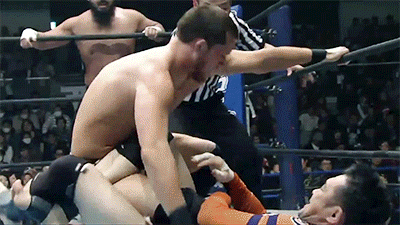
O’Reilly and Sakuraba wrestled for exactly one minute and 45 seconds. At the end of that span, I felt like I’d taken a master class in appreciating chain wrestling: the joy of interconnected moves, the excitement of the impromptu give and take.
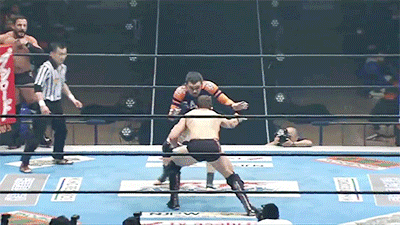
Chain grappling like this is done no justice in a GIF, cut out from the larger match and presented on its own. It can end up looking like a random tangle of limbs. But live, as part of a fuller sequence, it’s absolutely electrifying. It’s all about connections and links, about a sequence of moves building on each other. About the larger context.
That’s the genius of Kyle O’Reilly.
Kyle O’Reilly, who faces Finn Bálor for the NXT championship tonight at New Year’s Evil, has a move set that is nearly devoid of flashy, high-flying moves. His style is based on shoot fighting—jiujitsu, amateur wrestling, and kickboxing—and features a lot of submissions, suplexes, and striking combos. He’s not likely to pull out something that the audience can see coming and celebrate in joyous anticipation. Oh, but he can execute a high-risk maneuver with the best of them—he’s one of the few wrestlers in WWE trusted to safely execute a brainbuster, for example.
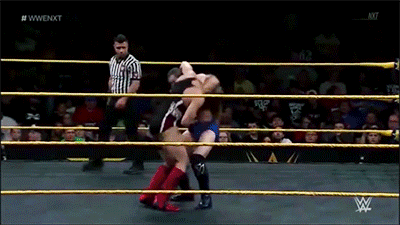
O’Reilly specializes in quick, economical, and efficient attacks. He has access to a huge arsenal of moves that he brings out of nowhere to rock his opponent, like his lightning-fast ax kick-forearm smash combo that can put wrestlers away while they’re still reeling from another offensive move:
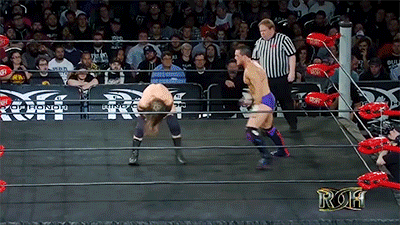
He has a submission for every occasion or position: Anytime you think you’ve escaped him or have him at a disadvantage, he’s likely to find a weakness and suddenly get the upper hand again with a triangle choke, an armbar, or an ankle lock:
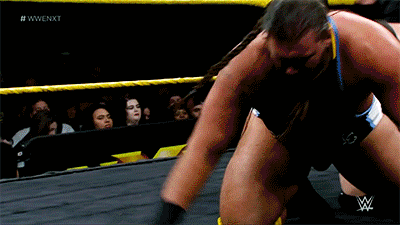
His array of suplexes—he’s been known to use German suplex, a Northern Lights suplex, a butterfly suplex, and a dragon suplex—means that at any moment his opponent could find himself thrown onto his neck with no warning. One of his most reliable suplexes is the Regalplex, shown here:
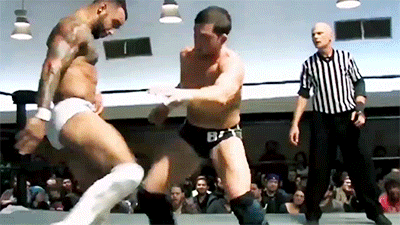
Any of these moves work on their own, but they really shine when O’Reilly has a chance to link them together in a flurry of strikes, holds, counters, and throws that replicate MMA fighting at its most dynamic: chain wrestling.
On the surface, O’Reilly’s character is that of a cold-eyed killer; he’s a technician who knows how to apply pressure and pain in the most precise ways to achieve victory. Slathered on top of that is O’Reilly’s sleazy tilt—he’ll throw in some hip gyrations to taunt his foes, boasting a sliminess that originated in his indie wrestling days and managed to follow him like a miasma when he came to WWE. (One of my favorite O’Reilly stories is that apparently Kevin Steen once met him in the locker room, took in his outfit, and complimented him on his commitment to the “douchebag gimmick”—only to be told that these were just Kyle’s regular street clothes).
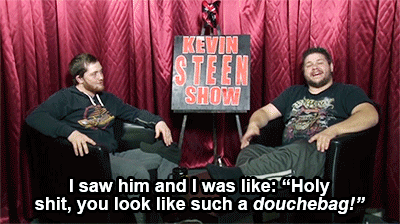
All slimy, animal ferocity—and yet, at the same time, he’s also a complete doofus.
His facial expressions and reactions are some of the very best in wrestling. Every promo from the Undisputed Era (O’Reilly’s faction) must be watched at least twice: once to get the content, and once to watch O’Reilly reacting to everything his cohorts say. Even the quickest and most random grab of some Undisputed Era promos reveals O’Reilly’s rubber-faced glory.
Come to see Adam Cole cut a promo on Aleister Black, stay for O’Reilly’s disgusted eye roll at the mere mention of Black:
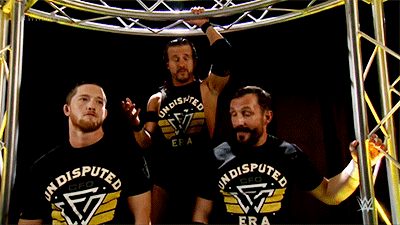
Come to see Adam Cole diss Ricochet, stay for O’Reilly’s ostentatious polishing of his title:
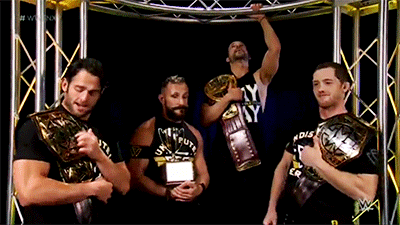
Come to see Bobby Fish threaten EC3 with a chair-beating, stay for the split-second of O’Reilly’s horror as he considers what his tag partner might be capable of:
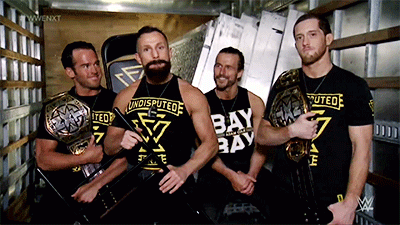
He’s a clown-athlete, the jock who can get away with being laughable because he (and his friends) can kick your ass if you so much as giggle.
That’s his character. In reality, he’s willing to suffer (or act like he’s suffering; in the world of O’Reilly the line can be rather fine) in the most cartoonish and ludicrous ways possible if that’s what the moment calls for, especially when he needs to make a more hulking wrestler look like a million bucks. He loses control of his limbs with impact, tracing wobbly arcs of mayhem:
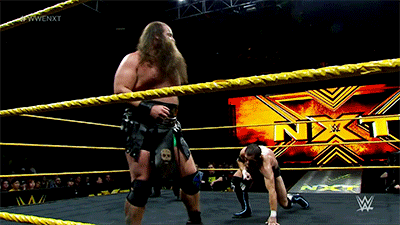
Impacts catch up to his brain belatedly, so his stubborn dumb momentum carries him forward just a bit too long, to comedic and dramatic effect:
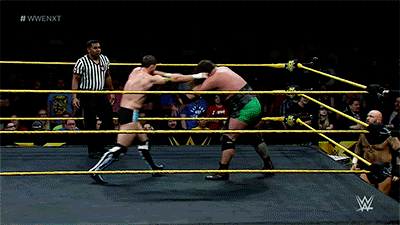
He sells a kickout like he’s in danger of being hurled into orbit:
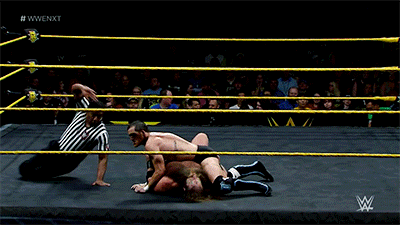
One of the best and most famous examples of his reckless disregard for his own dignity is a spot in the very first NXT TakeOver: WarGames match. O’Reilly takes a wild swing at Alexander Wolfe with a chair and misses. The chair rebounds off the ropes and smacks O’Reilly right in the face, setting him up to be suplexed by Wolfe.
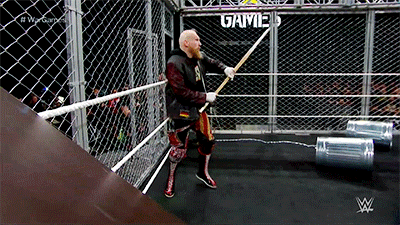
My reactions to this spot were a journey: I burst out laughing at the ridiculous karma of it, then immediately felt a bit guilty at the gust of enjoyment O’Reilly’s accidental comeuppance had given me. It was only belatedly, after the delight and the worry, that I realized O’Reilly had (of course) deliberately chairshotted himself. O’Reilly is one of the few wrestlers that exacts a suspension of disbelief from the viewer, as if we’re the ones in a match-long submission hold.
If all of this sounds wonderful and enjoyable, if slightly traumatizing, that’s it exactly. And if that sounds like a performer who would be hard to root against, well, that’s baked in it as well. Early Undisputed Era O’Reilly is a perfect example of the heel conundrum: He plays a character so unlikable, so clearly designed to eventually fail for our enjoyment, that it becomes impossible to dislike him.
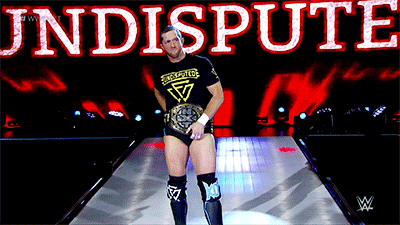
He would come to the ring obnoxiously strumming his title belt like an air guitar, ready (eager, even) to be the obstacle the heroes have to overcome; he gathered boos like bouquets, and underneath it all the audience loved him for it. When that audience response happens, it’s only a matter of time before the promotion channels that reaction and flips the performer to the heroic side.
But a face turn is not a moment. It’s a chain of events.
On August 26, shortly after returning from a pandemic-based hiatus, O’Reilly had a match with scrappy underdog Drake Maverick. Maverick gave him a good fight, but eventually O’Reilly tapped him out. After the match was over, Bobby Fish and Roderick Strong climbed into the ring to deliver the customary Undisputed Era postmatch beatdown to Maverick.
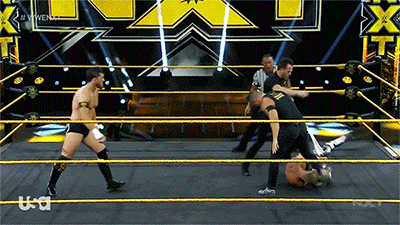
But instead of joining in, O’Reilly tried to stop them from attacking his opponent. He was laughing with a sort of “I beat him! He’s not even worth our time!” attitude that fits his arrogant character, and yet he was definitely not interested in inflicting any extra pain on Maverick. It was a small thing, just a tiny moment, but within the larger context of O’Reilly’s previous sadism, it was telling. It felt almost inevitable when, a few weeks later, O’Reilly interfered in another beatdown, this time by Tommaso Ciampa to Jake Atlas in the Full Sail parking lot.
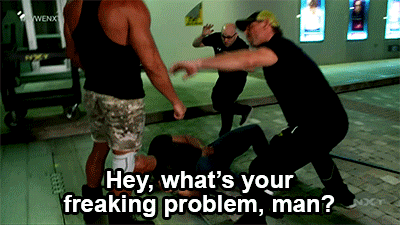
As before, O’Reilly isn’t some kind of altruistic hero: “It’s a freaking parking lot!” he yells. “You guys got a match next week, save it!” He’s more exasperated at the pointlessness than angry at the injustice, but it was clear by this point which way the wind was blowing.
I never would have expected O’Reilly to be the moral compass that led the entire Undisputed Era to a face turn, but damn if it hasn’t been great.
As O’Reilly has steadily turned the corner, his face work has been a wonderfully subtle shift from his heel work. He’s still a dork, still funny, and still vicious and tenacious. But the way he suffers is different. Gone are the cartoonishly dramatic bumps, the slack-jawed shock. On September 23, O’Reilly and Kushida start off a gauntlet match to determine a no. 1 contender to face champion Finn Bálor. O’Reilly is all business, grappling with Kushida in that same mat-based style he used against Sakuraba years ago.
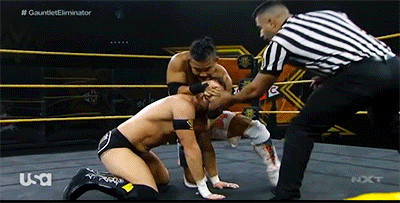
When trading forearms with Kushida in the tradition of the many New Japan matches, there are no cartwheeling arms or rubbery legs: He grits his teeth and trades blow-for-blow.
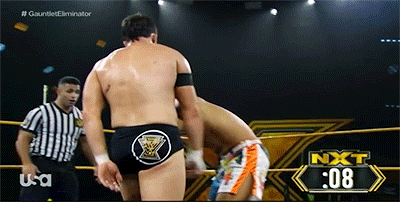
By the end of the match, he’s soaked in sweat and exhausted, and when he takes a surprise chest stomp from Cameron Grimes, there’s no flailing or theatrics as he just barely gets his foot to the ropes. He lies limp and still during Grimes’s premature celebration, his sides heaving to catch his breath:
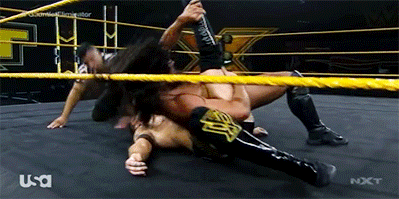
But then Grimes unwisely yells at O’Reilly: “You’re nothing like Adam! He was the man of the group!” This taunting attempt to relegate him to the eternal sidekick incites O’Reilly: He rises to his feet and continues the fight until he makes Grimes submit and gets his shot at the NXT championship.
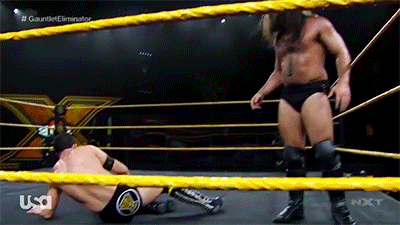
When O’Reilly faced Finn Bálor for the title on October 4, you could feel the sparse crowd at the Capitol Wrestling Center crackling with the desire to see him win. The match goes on for more than 30 grueling minutes in which each of them pulls out move after move, hold after hold. O’Reilly’s application of the grapevine ankle lock is all desperation and no sadism as he tries to dethrone the Prince:
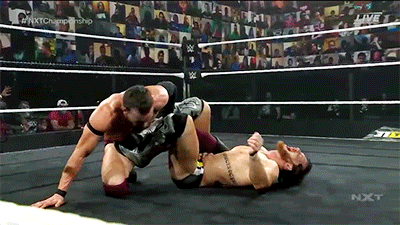
By the time it ends, they can barely stand. Both of them are bleeding from the mouth from authentic injuries. Bálor’s jaw is legitimately broken by O’Reilly’s knee, and he just manages to climb to the turnbuckle and deliver the Coup de Grâce for the win. When Bálor raises O’Reilly to his feet, it’s as an equal, and it feels entirely well-deserved.
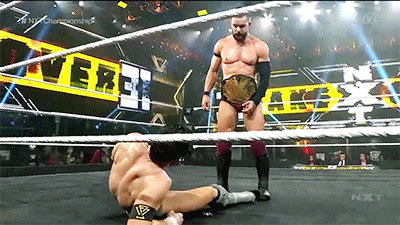
The past five months have been a chain of dependent events moving O’Reilly’s character forward link by link, through action and reaction. Sparing Drake Maverick leads to defending Jake Atlas leads to outlasting a gauntlet leads to standing in the ring with Finn Bálor as an equal. This leads, eventually, to 2020’s WarGames.
WarGames has always been a format in which O’Reilly has shined: something about the controlled chaos, the viciousness, and the sheer goofiness of the concept brings out the best in him. December 6’s WarGames is no exception, and the battle comes to a head when O’Reilly finds himself alone in one ring against Pete Dunne while everyone else sprawls in disarray in the other ring.
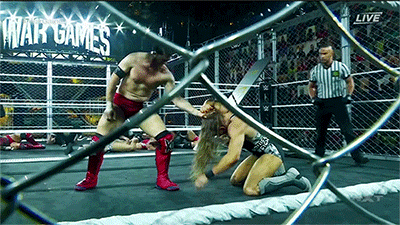
Dunne grabs his hand to wrench at his fingers. The O’Reilly of previous years probably would have fallen to his knees and flailed his other arm in exaggerated pain. This year, O’Reilly makes an incoherent sound of pain—it might even be “help”—and turns his head slightly, as if to try to call to the rest of his team. We can see them in the background, lying motionless, and we know they aren’t coming to his rescue, and that this time, after so many years with backup, O’Reilly is alone. We can see him realize it too, and he sets his jaw against the pain and fights on. It’s the tiniest bit of vulnerability that means the world in wrestling, that draws our sympathy for even this most vicious brawler.
There in the WarGames ring, after so many years of being the obstacle the heroes must overcome, it’s clear that he’s finally become the hero himself.
O’Reilly faces Bálor a second time Wednesday for the title at NXT New Year’s Evil. WWE announced that the match will go bell-to-bell, uninterrupted by commercials, They know that every move matters. It’s not clear yet where this carefully constructed chain of events will lead. But just like O’Reilly’s wrestling, the links have come together so neatly, and they shine so bright.
J.J. McGee teaches and attends wrestling shows in Japan when not posting GIFs and commentary on Twitter as @Mithgifs.